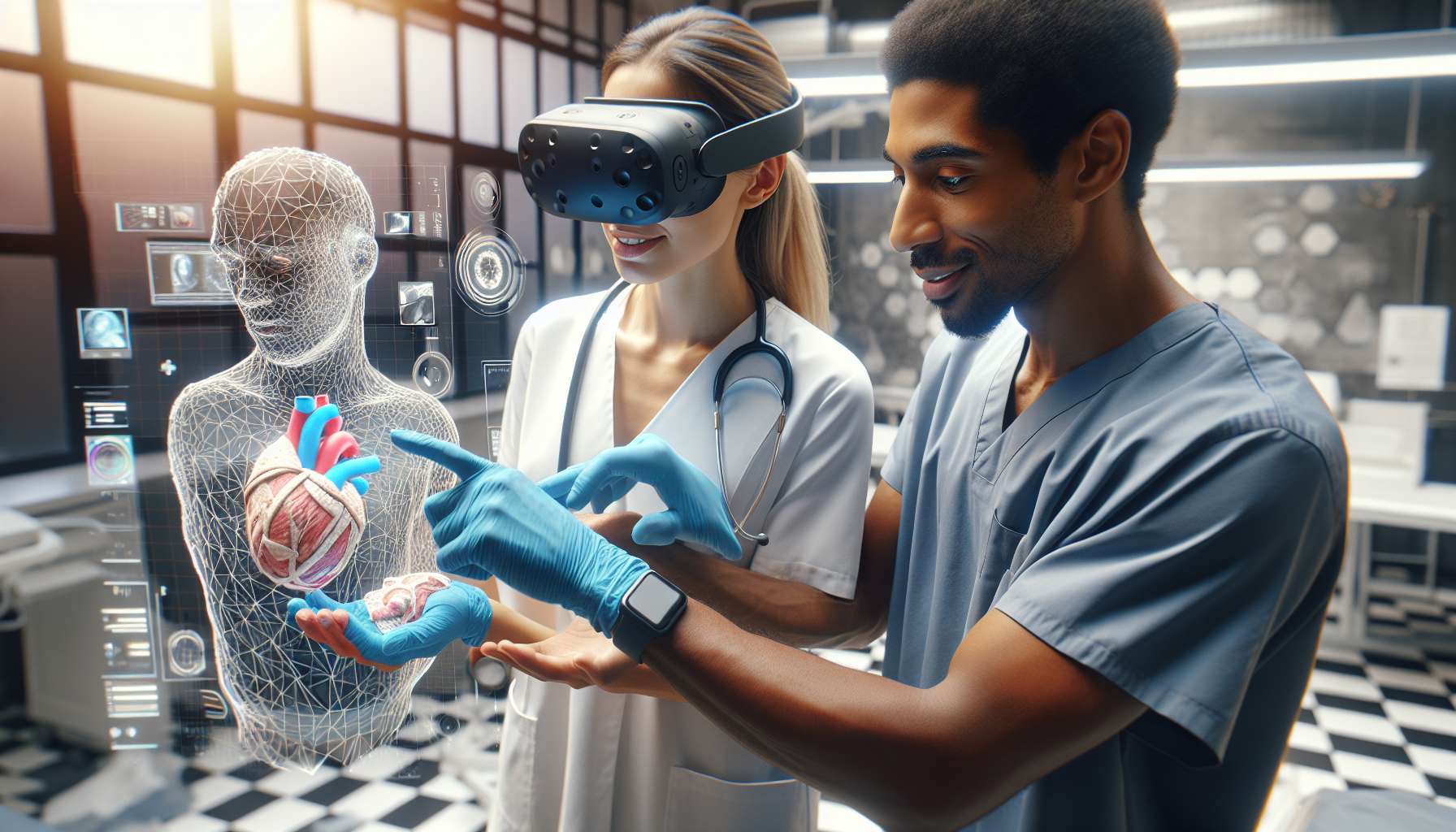Unlocking the Potential: Augmented Reality in Healthcare
Imagine a world where medical professionals can showcase the latest advancements in medical equipment without the need for physical prototypes. Thanks to the power of augmented reality (AR), this vision is becoming a reality. In this article, we will explore how AR is transforming the healthcare industry by revolutionizing medical equipment demonstrations.
The Power of Augmented Reality
Augmented reality is a technology that overlays digital information onto the real world, enhancing our perception and interaction with our surroundings. By using AR, healthcare professionals can now visualize and interact with virtual medical equipment in real-time, creating a truly immersive experience.
Traditionally, medical equipment demonstrations required physical prototypes, which can be costly and time-consuming to produce. With AR, these limitations are eliminated, allowing medical professionals to showcase the latest equipment without the need for physical models.
Enhancing Medical Equipment Demonstrations
AR brings a new dimension to medical equipment demonstrations, providing a range of benefits for both healthcare professionals and patients. Here are some key advantages:
- Realistic Visualization: AR allows medical professionals to view virtual medical equipment in a realistic manner, providing a detailed understanding of its features and functionality.
- Interactive Experience: With AR, healthcare professionals can interact with virtual medical equipment, exploring its various components and functionalities. This hands-on experience enhances their understanding and enables them to make informed decisions.
- Remote Collaboration: AR enables remote collaboration, allowing medical professionals to share their virtual demonstrations with colleagues and experts from around the world. This fosters knowledge exchange and facilitates decision-making processes.
- Cost and Time Savings: By eliminating the need for physical prototypes, AR significantly reduces costs and time associated with medical equipment demonstrations. This allows healthcare organizations to allocate resources more efficiently and accelerate the adoption of new technologies.
Real-World Applications
The applications of AR in healthcare are vast and continue to expand. Here are a few examples of how AR is transforming medical equipment demonstrations:
- Surgical Planning: Surgeons can use AR to visualize and plan complex procedures, improving precision and reducing risks.
- Medical Training: AR enables medical students to practice procedures and interact with virtual medical equipment, enhancing their learning experience.
- Patient Education: AR allows healthcare professionals to educate patients about medical procedures and treatments, increasing understanding and engagement.
- Medical Device Development: AR aids in the design and development of new medical devices, allowing engineers to test and refine prototypes virtually.
The Future of AR in Healthcare
The potential of AR in healthcare is immense, and its impact will only continue to grow. As technology advances, we can expect even more sophisticated AR applications, such as real-time patient monitoring and personalized treatment simulations.
Furthermore, the integration of artificial intelligence (AI) with AR holds great promise. AI algorithms can analyze medical data and provide real-time insights during AR demonstrations, further enhancing decision-making processes and improving patient outcomes.
Conclusion
Augmented reality is revolutionizing medical equipment demonstrations in the healthcare industry. By providing realistic visualization, interactivity, remote collaboration, and cost savings, AR is transforming the way medical professionals showcase and adopt new technologies.
As the applications of AR in healthcare continue to expand, we can look forward to a future where medical equipment demonstrations are more immersive, efficient, and accessible than ever before. Embracing this new dimension of AR will undoubtedly unlock new possibilities and drive positive change in the healthcare industry.





